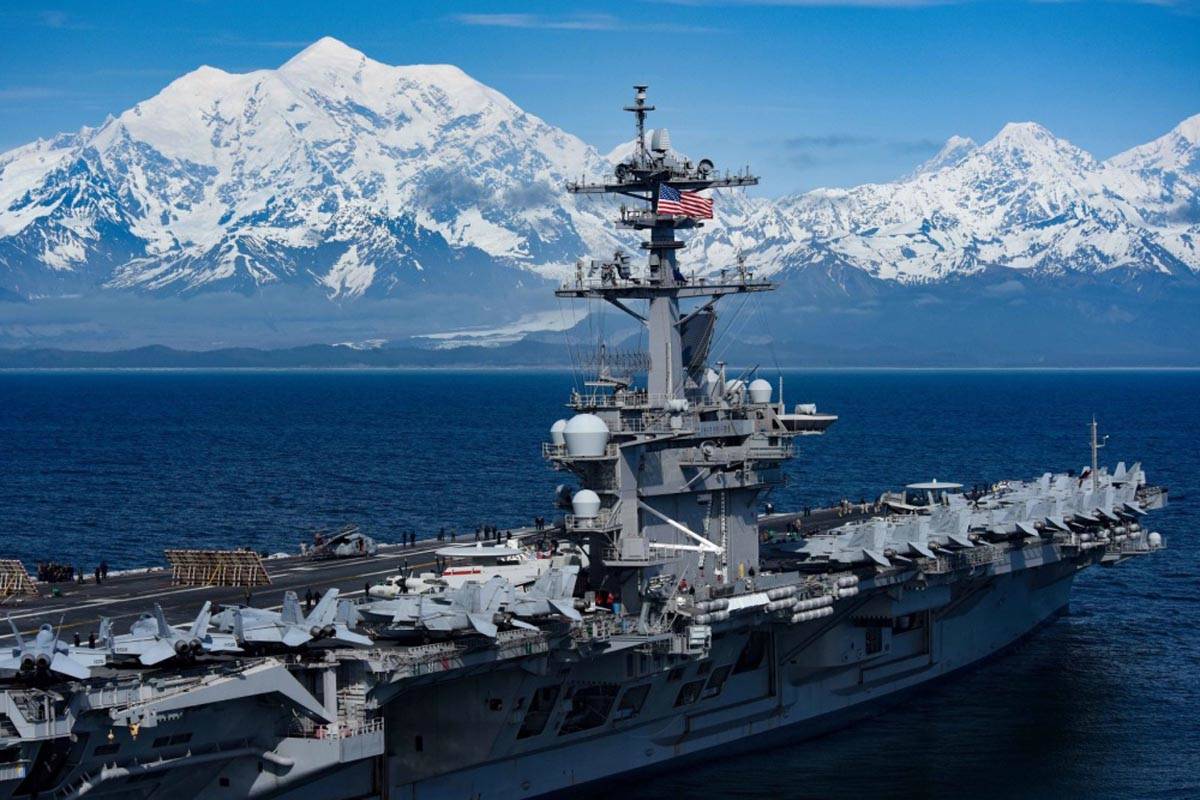The Navy is seeking input from locals, fishermen and concerned groups as it seeks to renew permits for using the Gulf of Alaska for training exercises.
“Any time the Navy wants to do any sort of action, they have to go through an Environmental Impact Statement,” said Julianne Stanford, an environmental affairs spokesperson for Navy Region Northwest in a phone interview. “The big part about the Gulf of Alaska is every other year, there’s the Northern Edge exercise.”
Exercise Northern Edge is a major exercise held every two years across Alaska. The Navy’s portion typically takes place in the Gulf. Last year, the supercarrier USS Theodore Roosevelt, CVN-71, and its escorts took part in exercises. Northern Edge is a large, joint services exercises, and other services, including the Army and Air Force, will be ashore taking part as well.
“With this particular EIS, we are not proposing to increase the training area,” Stanford said. “The number of activities and the size of the area is not changing.”
There have been concerns in the past about the use of sonar and explosive ordnance disturbing marine life in Navy training areas on both coasts and around the world. The EIS, Stanford said, is about hearing those concerns so that the Navy can avoid negatively impacting the diverse marine life, particularly the marine mammals, in the Gulf.
“A number of different marine mammal species, such as humpback whales, gray whales and Steller sea lions, may be present in the Gulf of Alaska throughout the year including when Navy training activities potentially occur,” Stanford wrote in an email. “It is noteworthy that the highest densities of most marine mammals occur closer to shore than where the training activities occur.”
The Gulf of Alaska has been a training ground for more than three decades, Stanford said, and a number of best practices have been put in place to minimize disruption for the marine mammals that call Alaska home. Stanford said that the Navy or partnering regulatory agencies have not noted changes in the numbers of marine mammals in the training areas.
“The Navy has developed numerous mitigations that include navigating away from marine mammals, implementing exclusion zones to cease activities or power down and shut down equipment if marine mammals are in proximity to training,” Stanford said.
• Contact reporter Michael S. Lockett at 757.621.1197 or mlockett@juneauempire.com.
Have concerns about the Navy’s training area?
The mechanisms for public comment, as well as more information about the exercises and their impacts, can be found on the EIS site.

